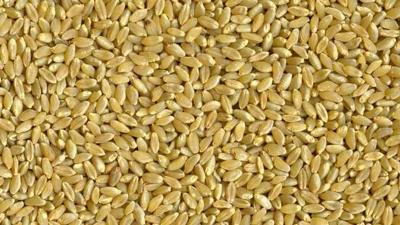The 2025 durum crop is in the ground, prices remain stable, and now the market turns its focus to weather and crop conditions.
“It’s no surprise that the main market factor right now is the North American durum crop progress and conditions. Most of the crop is in the ground, both here and up in Canada, so all eyes are on the weather and the crop potential now,” said Erica Olson, market development and research manager for the North Dakota Wheat Commission. She added that cash bids have remained relatively stable with most ranging from $6.70 to $7, while new crop bids are a little lower at $6.50 to $6.80.
As of mid-June in North Dakota, the durum crop was looking pretty good. The latest condition ratings show 68 percent of the crop is rated in good/excellent condition.
That’s actually down from the previous week, which surprised Olson a little. After seeing big temperature swings from quite hot to almost freezing in late May and early June, temperatures moderated in mid-June to more normal levels, which have been beneficial to the crop.
Olson pointed out that a decent portion of the durum area had some precipitation during the week ending June 13, which was also good for the crop, as well.
“The moisture situation has improved since earlier this year. The National Drought Monitor shows some of the western areas still abnormally dry to moderate drought conditions, but that’s so much better than it was two months ago,” she said.
So far, the crop is progressing well. In North Dakota, about 90 percent has emerged and about 25 percent has already reached the jointing stage. However, it’s a different situation in Montana. Things are a bit tougher there as conditions have remained drier over much of their durum region.
“They haven’t gotten the precipitation that we have. I know some areas of the state these past few days got some rain, but also some damaging hail in areas,” she said. “The emergence has been slow in Montana and the crop doesn’t look all that great. Only about 24 percent is rated in good/excellent condition and almost 30 percent is rated poor/very poor, so it’s completely different in Montana. That will definitely be watched for sure.”
North of the border, the Canadian crop is also in the ground, and they’ve been getting some timely rains, as well. However, some areas of their durum region are still a little dry, though nothing overly concerning as of mid-June.
“Looking at production estimates for this crop, most are pointing to slightly lower production primarily due to projected lower yields, so we’ll see how all that pans out,” she said.
In other news, USDA released its June WASDE (World Agricultural Supply and Demand Estimates) report in mid-June. USDA does not do class by class supply and demand estimates for the new crop year until July, so there’s nothing there yet.
The 2024-25 marketing year ended May 31, and USDA made no changes to the 2024-25 numbers in the June report. One number that was available was the final export data, and that showed export sales of 15 million bushels (MB).
“USDA still had its estimate at 20 MB, so we’ll probably see some adjustments being made in the next report,” she said.
Looking at the top markets for the past marketing year, Italy actually took back the No. 1 spot from Algeria, who was No. 2, followed by Nigeria, Morocco, and Venezuela. But, overall, exports were lower and a lot of that is due to the large Canadian crop and tougher competition.
The new marketing year began June 1, and thus far, U.S. new crop durum sales are at just over 3 MB, which is lower than last year at this time.
“But, interestingly, a good chunk of the sales are to Mexico, and the rest are in the ‘unknown destination’ category,” she noted. “Mexico’s production is (expected) to be substantially lower this year, so we are seeing more demand from Mexico who used to export a lot of durum, so that’s a bit of a change.”
Domestic demand in the U.S. hasn’t been too exciting and has remained slow and steady, according to Olson, adding that this is the time of year when everyone’s waiting for the new crop harvest.
“U.S. desert durum harvest is underway now, so that will bring a few supplies into the market and that will be followed by the northern durum harvest, so really there’s no urgency there,” she said.
Other issues in the durum market remain the same. The market is still monitoring dry conditions in Turkey, and there also seems to be reduced selling coming out of Turkey as there hasn’t been a lot of sales from there. The market is also watching the harvest in Europe and North Africa. “Production in Europe is estimated at 290 MB, which is a pretty sizable increase of about 10 percent,” Olson said, adding that North African countries combined are anticipating production of about 165 MB, which is slightly higher than last year. “The world numbers show nothing alarming, so that’s reflected in the market being stable.”












